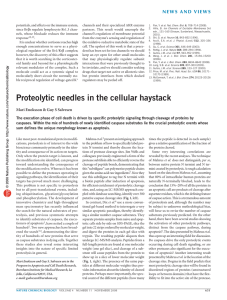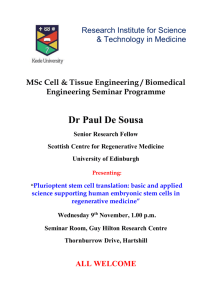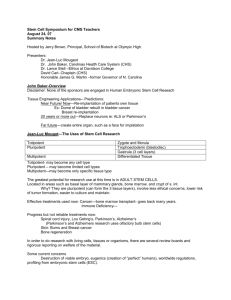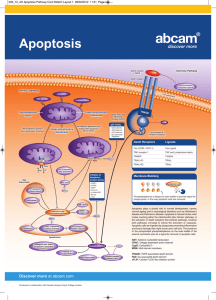Technology watch proteolysis through the eyes of proteomics
advertisement
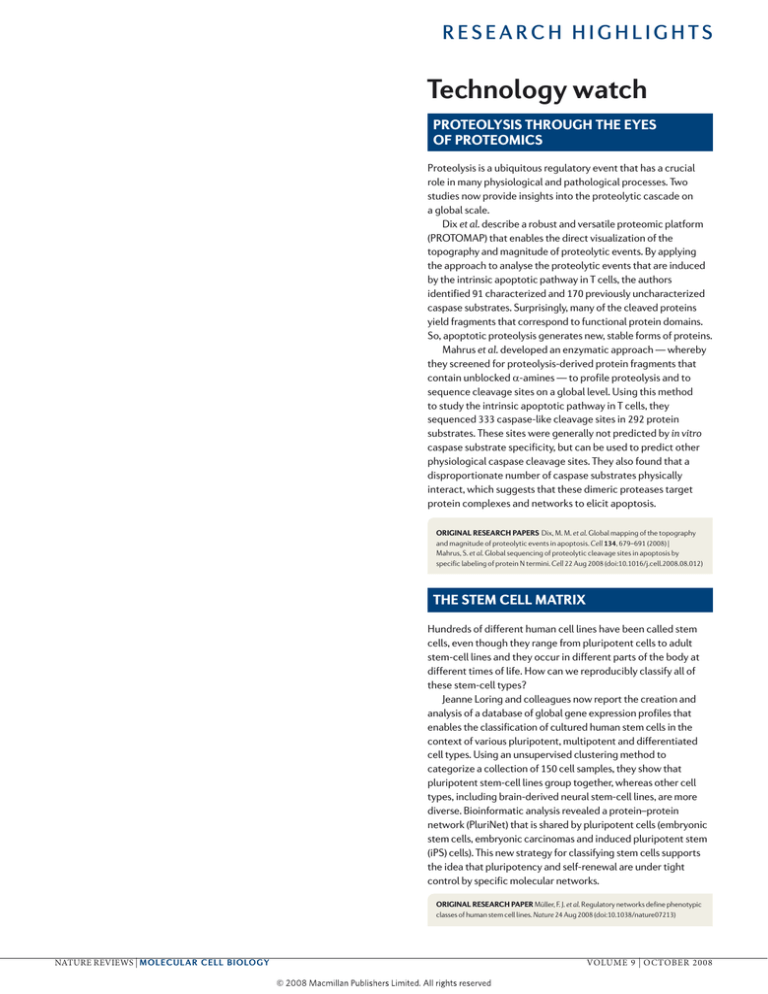
ReseaRch highlights Technology watch proteolysis through the eyes of proteomics Proteolysis is a ubiquitous regulatory event that has a crucial role in many physiological and pathological processes. Two studies now provide insights into the proteolytic cascade on a global scale. Dix et al. describe a robust and versatile proteomic platform (PROTOMAP) that enables the direct visualization of the topography and magnitude of proteolytic events. By applying the approach to analyse the proteolytic events that are induced by the intrinsic apoptotic pathway in T cells, the authors identified 91 characterized and 170 previously uncharacterized caspase substrates. Surprisingly, many of the cleaved proteins yield fragments that correspond to functional protein domains. So, apoptotic proteolysis generates new, stable forms of proteins. Mahrus et al. developed an enzymatic approach — whereby they screened for proteolysis-derived protein fragments that contain unblocked α-amines — to profile proteolysis and to sequence cleavage sites on a global level. Using this method to study the intrinsic apoptotic pathway in T cells, they sequenced 333 caspase-like cleavage sites in 292 protein substrates. These sites were generally not predicted by in vitro caspase substrate specificity, but can be used to predict other physiological caspase cleavage sites. They also found that a disproportionate number of caspase substrates physically interact, which suggests that these dimeric proteases target protein complexes and networks to elicit apoptosis. origiNAl reseArch pApers Dix, M. M. et al. Global mapping of the topography and magnitude of proteolytic events in apoptosis. Cell 134, 679–691 (2008) | Mahrus, S. et al. Global sequencing of proteolytic cleavage sites in apoptosis by specific labeling of protein N termini. Cell 22 Aug 2008 (doi:10.1016/j.cell.2008.08.012) the stem cell mAtrix Hundreds of different human cell lines have been called stem cells, even though they range from pluripotent cells to adult stem-cell lines and they occur in different parts of the body at different times of life. How can we reproducibly classify all of these stem-cell types? Jeanne Loring and colleagues now report the creation and analysis of a database of global gene expression profiles that enables the classification of cultured human stem cells in the context of various pluripotent, multipotent and differentiated cell types. Using an unsupervised clustering method to categorize a collection of 150 cell samples, they show that pluripotent stem-cell lines group together, whereas other cell types, including brain-derived neural stem-cell lines, are more diverse. Bioinformatic analysis revealed a protein–protein network (PluriNet) that is shared by pluripotent cells (embryonic stem cells, embryonic carcinomas and induced pluripotent stem (iPS) cells). This new strategy for classifying stem cells supports the idea that pluripotency and self-renewal are under tight control by specific molecular networks. origiNAl reseArch pAper Müller, F. J. et al. Regulatory networks define phenotypic classes of human stem cell lines. Nature 24 Aug 2008 (doi:10.1038/nature07213) nature reviews | molecular cell biology volume 9 | o ctober 2008


